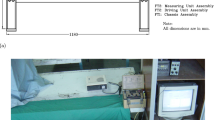Abstract
Due to their brittleness, assembling of ceramics pieces is generally achieved through brazing but thermal stresses during cooling frequently induce cracking of the material used for brazing. In order to check if such damage is avoidable, it is necessary to characterize the brittle to ductile transition (BDT) of the material. Simple compression is not suited for crack studies, because of mixed loading (mode II + compressive mode I cracking). Another type of test, the cylinder splitting test, known as the Brazilian test, can be carried out by applying compressive forces on two opposite generatrix of a cylinder: this causes a uniform tensile stress on the plane containing the axis of the cylinder and the generatrix, leading to mode I cracking. The advantage of this test is to avoid expensive and random machining of brittle samples. This study shows that the Brazilian test is well adapted for the measurement of toughness and the characterization of the BDT of materials whose room temperature behaviour is brittle (silicides, intermetallics etc.).
Similar content being viewed by others
References
HF Bueckner (1970) ArticleTitleA novel principe for the computation of stress intensity factors Z Angew Math Mech 50 529–546 Occurrence Handle0213.26603 Occurrence Handle272239
DS Dugdale C Ruiz (1972) Elasticité à l’usage des ingénieurs et physiciens Ediscience Paris 58
MM Frocht (1947) Photoelasticity Wiley New York 152 Occurrence Handle0121.19604
Gasse A (1996) Rôle des interfaces dans le brasage non réactif du SiC par les siliciures de Co et Cu. Thèse de Doctorat de l’Institut National Polytechnique de Grenoble, France
PB Hirsch SG Roberts (1996) ArticleTitleComments in the brittle-to-ductile transition: a cooperative dislocation generation instability; dislocation dynamics and the strain rate dependence of the transition temperature Acta mater 44 2361–2371 Occurrence Handle10.1016/1359-6454(95)00363-0
G Hondros (1959) ArticleTitleThe evaluation of Poisson ration and the modulus of material of a low resistance by the Brazilian (indirect tensile) test with particular reference to concrete Aust J Appl Sci 10 243–268
C Rado S Kalogeropoulou N Eustathopoulos (1999) ArticleTitleWetting and bonding of Ni-Si alloys on silicon carbides Acta mater 47 461–473 Occurrence Handle10.1016/S1359-6454(98)00374-7
Lamy M (2000) Etude structurale et chimique par microscopie électronique en transmission d’interfaces SiC/siliciures de Co, Fe ou Ni. Thèse de Doctorat de l’Institut National Polytechnique de Grenoble, France
G Michot MA Loyola de Oliveira G Champier (1999) ArticleTitleA model of dislcoation multiplication at a crack tip: influence on the brittle to ductile transition Mater Sci Eng. A 272 83–89 Occurrence Handle10.1016/S0921-5093(99)00473-6
Muskhelishvili NI (1954) Some basic problems of the mathematical theory of elasticity. Noordhoff Int. Publishing, Leyden (1954, 1977 second edn) part V, p 315
SP Timoshenko JN Goodier (1970) Theory of elasticity McGraw-Hill New-York 212
Author information
Authors and Affiliations
Corresponding author
Rights and permissions
About this article
Cite this article
Proveti, J.R.C., Michot, G. The Brazilian test: a tool for measuring the toughness of a material and its brittle to ductile transition. Int J Fract 139, 455–460 (2006). https://doi.org/10.1007/s10704-006-0067-6
Received:
Accepted:
Issue Date:
DOI: https://doi.org/10.1007/s10704-006-0067-6




